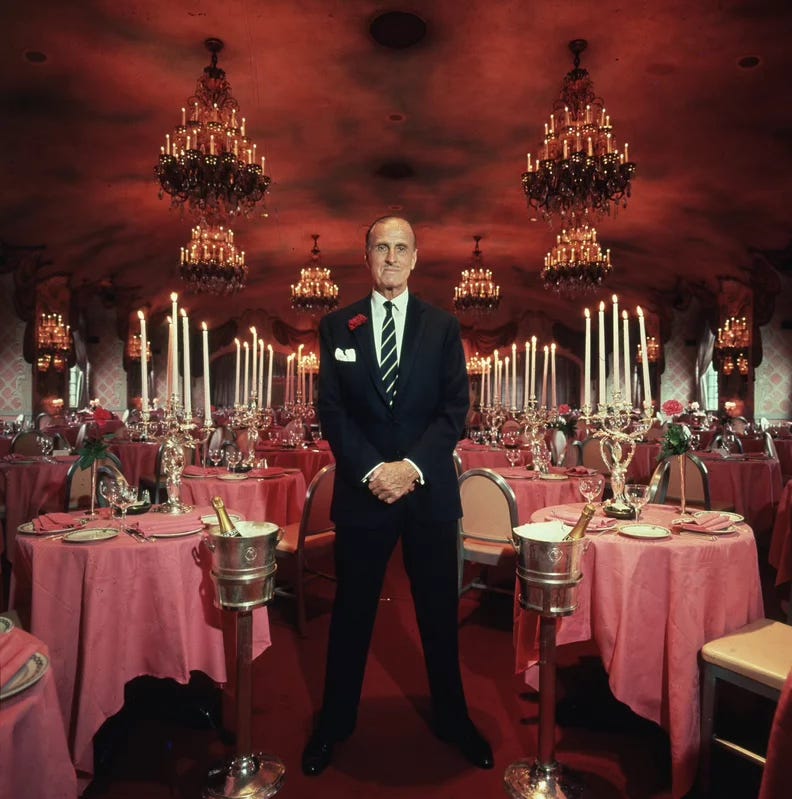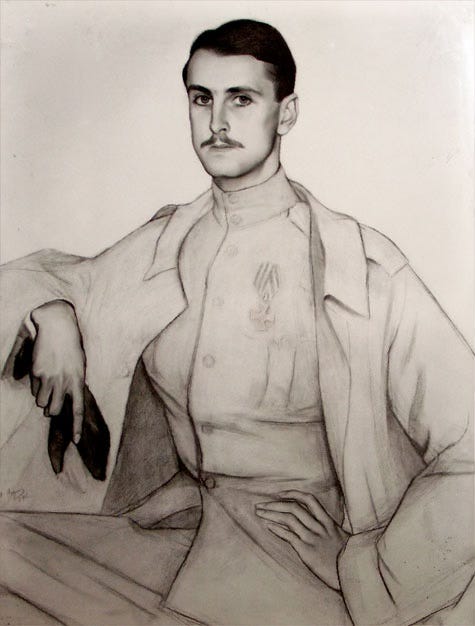Adorable Story #42: Col. Serge Obolensky
An aristocrat who became a hotel-keeper, and a Russian cavalryman turned American commando

Prince Sergei Platonovich Obolensky Neledinsky-Meletzky (November 3, 1890 – September 29, 1978), known as Serge Obolensky, was a Russian-born aristocrat then American citizen, U.S. Army colonel, socialite and publicist, who served as vice chairman of the board of directors of the Hilton Hotels Corporation.
The life story of Serge Obolensky reads like a Ken Follet novel.
His early life is like a fairy tale: born as a Russian prince, he married a princess.
He had thrilling adventures: as a courageous and charming young cavalry officer in World War I, he managed to escape the Bolsheviks, who had put a bounty on his head and wanted him “dead or alive”.
In World War II, he turned into an American commando, parachuting into Sardinia under Nazi occupation.
His life also had a touch of the glamour from the Gatsby era: his second wife was the famous American heiress Alice Astor of the Astor fortune.
Adding to the intrigue, there’s even a popular cocktail story: it is believed that the Colonel himself was the inspiration behind the creation of the modern recipe of the Bloody Mary at the King Cole Bar in The St. Regis - New York.
This mixture of experiences might seem too incredible to be real, but as we will read below, life can often outdo fiction.
This Adorable Story is brought to you in collaboration with whereismyhotel .
If you aren’t subscribed yet, hit the subscribe button below to receive the Adorable Stories every weekend, directly in your inbox:
Origins
Born into the Russian nobility on November 3, 1890, Colonel Serge Obolensky’s life was anything but ordinary.
His early years were spent in the grandeur of Tsarist Russian society: Serge Obolensky’s parents were Prince Platon Sergeyevich Obolensky-Neledinsky-Meletzky (1850–1913) and Maria Konstantinovna Naryshkina (1861–1929). He had a younger brother, Vladimir (1896–1968), who died unmarried and childless.
In his memoirs, Serge recalled the vanished country of his youth: the winter sleigh-rides to his grandmother’s palace in St. Petersburg, the summers spent on his parents’ vast estates, the fun of Countess Tolstoy’s costume ball.
And there were trips abroad with all the family: they visited Paris, and fashionable belle époque resorts such as San Sebastian on the Côte Basque and Biarritz.
Serge completed his education at Oxford, England, where he played polo and joined the exclusive Bullingdon Club.
Many of the friendships that Obolensky formed at this time in Europe would be important in his later life in America.
But in both London and St. Petersburg, he was experiencing two great imperial capitals on the eve of enormous change.
In London, he recalled:
“an air of massive elegance and leisure all but inconceivable in any later period. I believe I saw the end of it… the mellow grandeur of the Edwardian age.”
In Russia, the revolution was about to completely destroy the world Serge was living in.
As World War I broke out, Serge left Oxford, returned to Russia and enlisted in the army as an officer in the Cavalier Guard regiment.
The Revolution
Serge sensed the coming crisis as the vast Empire of all Russias started to crumble under the strain of World War I: in 1916 he married Princess Catherine Yurievskaya, the daughter of Tsar Alexander II and his aristocratic mistress (and later wife) Princess Catherine Dolgorukova.
With the start of the Revolution, the big cities were plunged into chaos, and Serge and Catherine escaped the mass killings of the noble families and the intelligentsia connected with the Tzar, by fleeing St. Petersburg by walk and reach Crimea.
In Crimea, Serge joined the “White” forces fighting the Bolshevik “Reds”, as the horrors of civil war unfolded.
Around this time the society painter Savely Sorine drew a sketch of Obolensky (photo below).
The sketch was shot up multiple times when the Reds ransacked Princess Catherine’s palace in Yalta.
After it was shot, it was displayed with the inscription: “Serge Obolensky, Wanted, Dead or Alive”, until Sorine himself bribed a guard with three roubles to let him take down the sketch and then smuggled it out of Russia (somehow, it finally ended up in the Colonel’s Manhattan apartment many years later).
More importantly, Sorine was also able to smuggle Princess Catherine out of her ransacked palace and into hiding.
Serge and Catherine would then be reunited in Moscow, both under a fake identity.
They eventually escaped to London, via Vienna and Bern in Switzerland (where Serge managed to access to the USD 200,000 he had been able to take out of Russia into various Swiss bank accounts).
Keep reading with a 7-day free trial
Subscribe to Adorable Times’ Newsletter to keep reading this post and get 7 days of free access to the full post archives.






